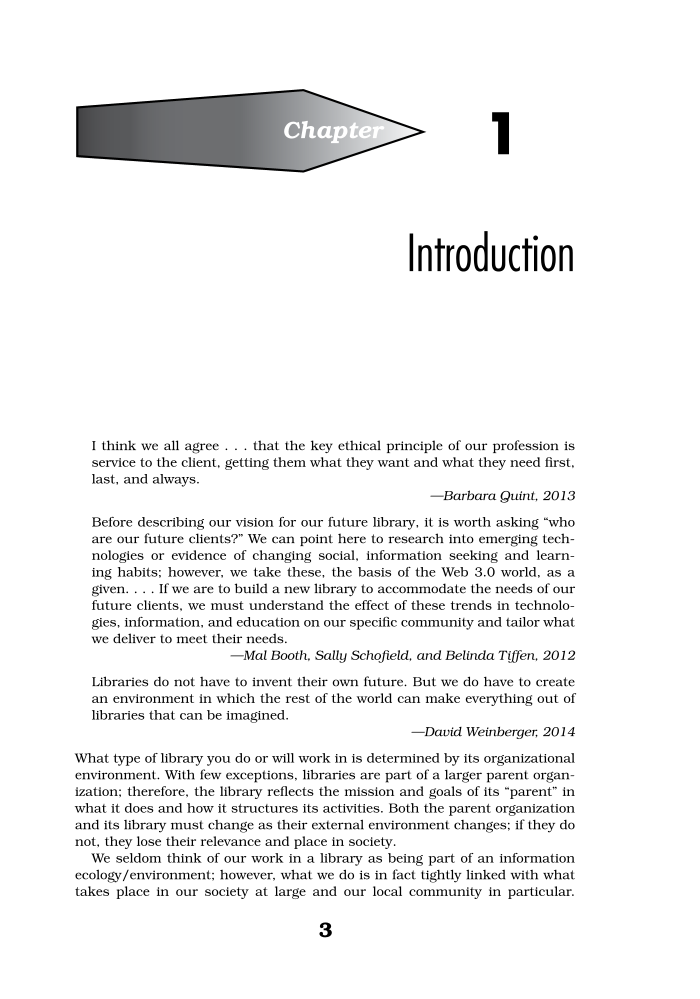3 Chapter 1 Introduction I think we all agree . . . that the key ethical principle of our profession is service to the client, getting them what they want and what they need first, last, and always. —Barbara Quint, 2013 Before describing our vision for our future library, it is worth asking “who are our future clients?” We can point here to research into emerging tech- nologies or evidence of changing social, information seeking and learn- ing habits however, we take these, the basis of the Web 3.0 world, as a given. . . . If we are to build a new library to accommodate the needs of our future clients, we must understand the effect of these trends in technolo- gies, information, and education on our specific community and tailor what we deliver to meet their needs. —Mal Booth, Sally Schofield, and Belinda Tiffen, 2012 Libraries do not have to invent their own future. But we do have to create an environment in which the rest of the world can make everything out of libraries that can be imagined. —David Weinberger, 2014 What type of library you do or will work in is determined by its organizational environment. With few exceptions, libraries are part of a larger parent organ- ization therefore, the library reflects the mission and goals of its “parent” in what it does and how it structures its activities. Both the parent organization and its library must change as their external environment changes if they do not, they lose their relevance and place in society. We seldom think of our work in a library as being part of an information ecology/environment however, what we do is in fact tightly linked with what takes place in our society at large and our local community in particular.
Document Details My Account Print multiple pages
Print
You have printed 0 times in the last 24 hours.
Your print count will reset on at .
You may print 0 more time(s) before then.
You may print a maximum of 0 pages at a time.





































































































































































































































































































































































































































































































































